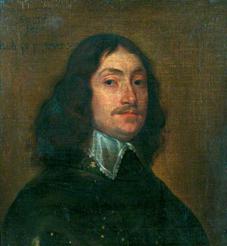Lord Curzon has described Herbert’s work as: “by far the most amusing work [on Persia] that has ever been published”[1]. Although he visited Iran in 1626-29 – after della Valle and Figueroa – his account was made publicly available much more quickly. The first edition of A relation of some yeares travaile.. Into Afrique and the greater Asia, especially the Territories of the Persian Monarchiewas published in 1634. Herbert’s book was then reprinted and augmented five times, with additional Dutch and French translations appearing in 1653 and 1668 respectively[2].
The date and popularity of Herbert’s publications make them important early influences on the symbolic image of the maydan. I also want to focus on Herbert’s writings because of the significant changes between the various editions.
Herbert was a junior member in the Dodmore Cotton embassy, as sent by Charles II of England to Shah Abbas the Great. Officially, the embassy was tasked with establishing formal trade and diplomatic relations between England and Persia. Unofficially, it aimed to resolve the diplomatic impasse following the public fisticuffs in London between Anthony Sherley’s brother, Robert, and Abbas’ 1625 ambassador to Europe, Naqd Ali Beg[3].
[1] George N. Curzon, Persia and the Persian Question (London: Longmans, Green & Co., 1892), I/18.
[2] John Butler, “Herbert, Thomas (2)”. Worldcat lists 70 editions published between 1626 and 1976 in English and French.
[3] John Butler, “Herbert, Thomas (2)”. The Shirley brothers had something of a family tradition of fighting with Persian envoys: in 1601 Anthony had “come to blows… on the steps of a Vatican palazzo” with a Persian who, like him, claimed to be the ambassador of Shah Abbas. Brinda Charry and Gitanjali Shahani, Emissaries in early modern literature and culture, 24.

You might like to know that my edition of Herbert’s Travels was published last year by AMCRS at the University of Arizona. It’s the first complete modern edition (some 900+ pages).